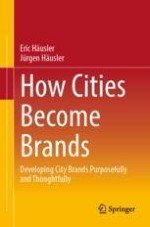2024 | OriginalPaper | Buchkapitel
2. The Observation: Cities are Brands
verfasst von : Eric Häusler, Jürgen Häusler
Erschienen in: How Cities Become Brands
Verlag: Springer Fachmedien Wiesbaden
Aktivieren Sie unsere intelligente Suche, um passende Fachinhalte oder Patente zu finden.
Wählen Sie Textabschnitte aus um mit Künstlicher Intelligenz passenden Patente zu finden. powered by
Markieren Sie Textabschnitte, um KI-gestützt weitere passende Inhalte zu finden. powered by
